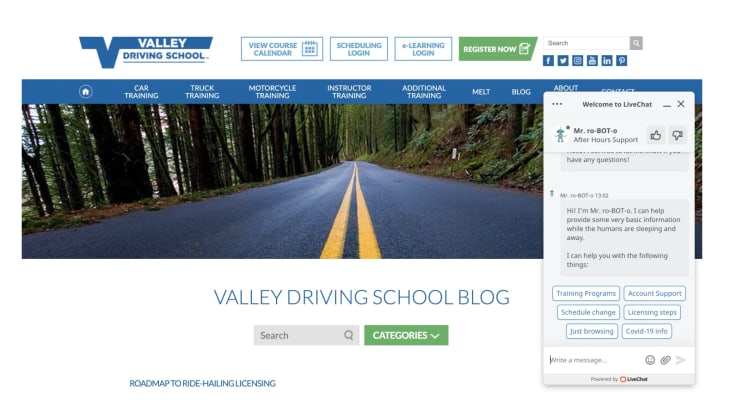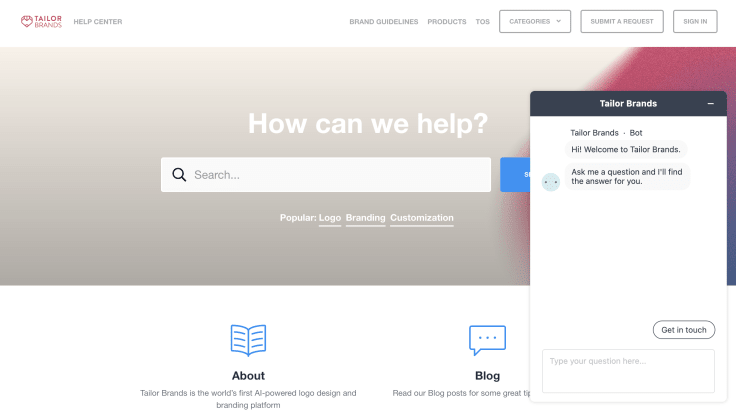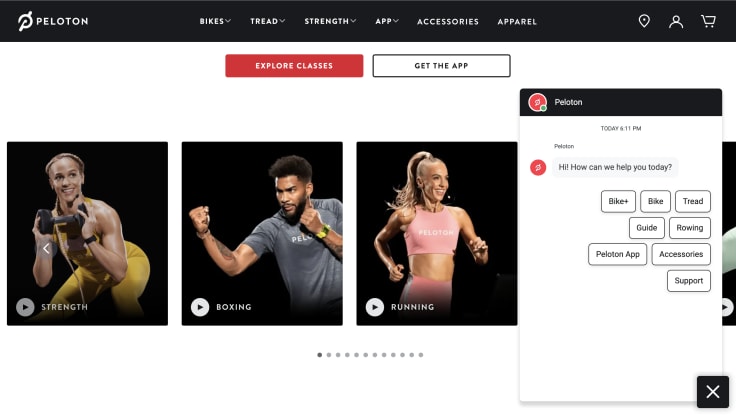Showing top 0 results 0 results found
Showing top 0 results 0 results found

The most significant part of increasing chatbot engagement is getting your audience comfortable talking to robots. With substantial aspects of online businesses becoming increasingly automated daily, ensuring your bot engages with potential customers properly is a fundamental aspect of making this touchpoint work.
And it all comes down to holding your customers' interest; if you aren't doing it, you're missing out on the benefits this marvelous tool can bring to your business.
Data shows that chatbot usage has increased by 92% since 2019, marking them as one of the fastest-growing communication channels for brands. Not only that, but chatbot technology is constantly evolving and advancing in this digital world. Chatbots can handle more than two-thirds of customer conversations from start to finish without human interaction. But, just because you've introduced a chatbot doesn't mean that customers will use it.
Adding a chatbot to your website is the first piece of the puzzle. After all, if customers aren't using it and keep calling your customer service line for simple inquiries, your investment is not paying off. Chatbots can be a cost-effective and efficient way for you to provide 24/7 customer service. Still, to reap the benefits, you must prioritize and focus on improving chatbot engagement.
In this post, I’ll share seven tips that will help you increase chatbot engagement and get your customers to respond. Let's take a closer look.
Looking for ways to increase your customer satisfaction?
What is a chatbot?
A chatbot is a computer program that uses artificial intelligence (AI) and automation to simulate conversations with real people.

They typically appear as a small avatar or pop-up chat in the bottom corner of a website. chatbot app can answer questions, perform tasks, and even sell products. Chatbots are most commonly used as a customer service tool to provide a convenient way to interact with online customers.
How can chatbots help customers?
The benefits of chatbots are numerous. Chatbots help customers because they are easily accessible and reduce long response times compared to traditional customer service methods like email or call centers.
Chat bots are available 24/7 and give customers real-time access to your business. Gone are the days of waiting on hold for hours to find out the cost of checking a bag on an airline. Bots can help answer those clients' questions in a matter of seconds.

Chatbots also leverage AI technology to create a more personalized experience. They can take in the user question and provide the answers based on past interactions with your website or purchase history. Thanks to machine learning, they can learn from previous interactions and deliver better results in the future.
Adding to that, chatbots are a great way to interact with your customers and get them the information they need without the frustration of waiting on hold or navigating complex phone menus.
7 tips to increase your chatbot engagement
For many, chatbots are one of the most exciting developments in digital marketing. 80% of people have interacted with a chatbot at some point. The trends show that by 2027, the worldwide chatbot market will reach $454.8 million in revenue, an increase from $40.9 million in 2018.

There's no doubt that chatbots can improve customer engagement when used correctly. Below, you can read about seven tips to help that can help you do that. Let’s dive in.
1. Make it easy for customers to find your chatbot
Start by creating a visually pleasing homepage. It matters more than you think. If your page is cluttered or poorly designed, finding your chatbox can be challenging and cause your customer to bounce from your website altogether.
To get help with creating your website, you can use a popular landing page builder. Such tools can help you optimize your website and match it with your chatbot look.
2. Integrate your chatbot with other communication channels
With digital transformation affecting almost every industry, companies are looking to gain advantages by catering to different demands.
One of the best ways to increase your chatbot engagement is by integrating it with other communication channels. Ensure your chatbot is optimized to reply according to the customer's needs and can integrate with email, SMS, social media, and VoIP.
According to CNBC, chatbots will answer 90% of banking and healthcare queries by 2022. This forecast also includes cost savings of up to $0.70 per interaction.
Banks like MOS, known for their bank accounts for college students, have recognized the benefits of using AI and other tech disruptors so that their business models can benefit from an omnichannel presence.

In addition to increasing engagement, integrating multiple communication channels will allow you to access different data types and make better data-driven decisions.
3. Create a community where people can share their concerns and experiences
When building your chatbot, establish an interactive environment that provides users with common questions that they can quickly click on and get solutions based on data from other customers who have faced similar issues.
Chatbots are replacing humans in several areas, from tutoring to customer services, but often, their interactions are too machine-like.
Adding flair to your chatbot by using image effects or other designs can help enhance interactions with a bot and make them feel less robotic and more user-friendly.
4. Don’t be too pushy
The customer is always right. Therefore, you need to be careful not to scare off your customers by being too pushy or sales-focused.
You also must ensure your chatbot is nonchalantly promoting its benefits and not forcing the user into responding or signing up for something they're not interested in.
Be subtle and respectful — if you're asking too many questions, the user might think you're just trying to sell them something (even when it isn't true).
A conversational tone is the future of customer service. Use chatbots to give customers simple and quick answers to help them resolve complex issues and questions.
A conversational tone makes your customers feel comfortable interacting with you or even like they're talking to a real person. After all, the main goal of a chatbot is to help your customer and not scare them away.
5. Offer your customers a real-time conversation
Chatbots are an excellent tool for real-time communication. They can answer questions, solve problems, provide information and feedback, and even support when customers need it most. However, if your chatbot doesn't provide a real-time conversation experience with your users, you'll lose them very quickly.
Here's how to keep your customers engaged:
- Offer a seamless experience where the chatbot answers questions or solves problems in real-time.
- Make sure your bot is available 24/7 so that customers can get help at a convenient time.
6. Collect insights about your product or service
Use your bot as a tool for collecting customer insights. Gathering first-party data can help create a personalized experience for future interactions or improve your product or service. For example, Carvana suggests creating an account to improve personalization with their chatbot service.
Gathering first-party data has many benefits:
- It helps you better understand what customers think about your product or service. The more insight you have into their thoughts and opinions, the easier it is for you to make improvements that'll make them happy and keep them around longer.
- It allows you more time to improve other aspects of the business. This can include marketing strategies or sales techniques — anything that'll help bring in new customers and prevent churn with existing ones.
Effective AI chatbots require vast training data to resolve user requests correctly. After all, they must understand what people are saying and respond accurately.
However, obtaining quality data can be challenging in bot training, as using data with personal information is limited due to privacy regulations (especially in the banking industry).
Luckily, solutions such as synthetic data can help meet data demands by providing high-quality and accurate synthetic copies of data to help improve the performance of machine learning algorithms.
From AI and machine learning to product development, synthetic data use cases are extensive and can help chatbots provide the best possible user experience. It's better to be safe than sorry. That last thing you want is a lawsuit on your hands.
7. Stay consistent
When creating a chatbot for your business, give it a unique name and personality that matches your brand identity. Remember to provide a seamless look with your website design and email flows to offer users a consistent user experience from beginning to end.
If you need help establishing your brand identity and style, look at your competitors' websites and social media to find inspiration for what works well and doesn't. Or there are plenty of examples of SaaS and other industry product pages for your viewing.
A consistent brand message is the game's name regardless of your style. Adding a human touch doesn't hurt either. Everyone loves a friendly conversation compared to a robotic one.
3 stellar chatbot examples
Let's dive into a few chatbot examples that steal the show with their creativity, personalization, and unique features.
1. Tailor Brands
Sometimes navigating AI chat boxes can be confusing because every website is different. Help your customer through the conversation experience by providing clickable responses.

For example, this chatbox on the website for Tailor Brands prompts the customer to click "Get in touch" after a few seconds of inactivity in the free-response section. If the customer asks a question like "how to create a logo," the chatbot pulls resource links from the website's blog and again prompts the "Get in touch" message if further assistance is required.
Always allow your customer the option to leave a message with a "real person," as sometimes AI responses can grow frustrating and tiresome for the customer.
2. Carvana
The chatbot on the Carvana website stands out because they offer multiple ways to engage in bot conversations with its brand.

At the top, there's a freeform section where users can ask anything. The middle section provides quick-access buttons featuring popular topics and frequently asked questions.
Finally, at the bottom of the form, you can sign up or sign in to an account for a personalized experience.
3. Peloton
Chatbots don't always have to be complicated. Peloton keeps it simple with specific buttons to drive action.

By avoiding a freeform section where customers can ask anything under the sun, dedicated buttons help give users quick directions on obtaining the information they are looking for. Sometimes less is more.
Dedicated buttons help easily track chatbot metrics to understand customer intention and engagement with your bot.
Looking for ways to increase your customer satisfaction?
Wrapping up
Chatbots do live up to the hype. They help you provide instant value to your customers when and where they need it most. And access to customer support 24/7 is hard to beat. But don't forget that a little effort is required to provide the ultimate chatbot experience.
I hope these seven simple tips help you create and implement the best possible chatbot experience for your users and improve your engagement tenfold.



